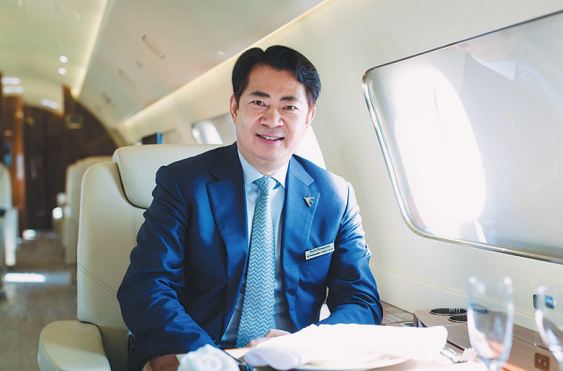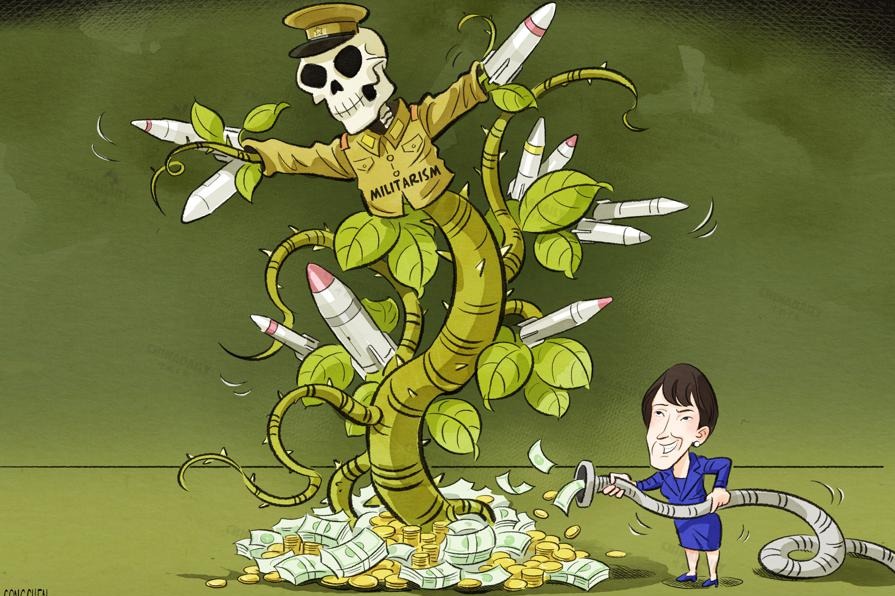Industrial upgrading is vital for growth
By Zhu Wenqian | China Daily | Updated: 2018-07-26 10:47
Editor's Note:This year marks the 40th anniversary of China's reform and opening-up. China Daily interviewed top executives of well-known multinational companies for their views on the country's socioeconomic development.

Brazilian aircraft maker Embraer vows to grasp opportunities for cooperation in flourishing Chinese aviation market
Please use three words to describe China's changes in the past 40 years.
Opening-up, leap and globalization.
What's the biggest challenge China faces today and how can the country overcome it?
The first challenge is that the country needs to push forward industrial upgrading transformation. If China wants to continue its steady economic growth and maintain sustainable development of both the economy and the environment, then industrial upgrading transformation is a must.
It is also vital to solve the imbalance of economic development in different regions, in order to maintain a healthy economy.
Last but not the least, it is always important to emphasize the importance of environmental protection.
How has your company benefited from China's reform and opening-up policy?
China's fast economic growth has fueled the rapid development of the aviation industry. By 2000, the country had become a significant market in the international aviation industry. It was because of the big potential of the civil and business aviation industries in China that Embraer decided to enter this important market in 2000. After 18 years of development here, Embraer has now become an important player in the regional aviation market.
By June, ERJs and E-Jets made by Embraer had flown more than 550 routes and linked 150 cities in China. Each year, the jets make 210,000 flights and carry 20 million passengers to their destinations. In total, we have delivered 153 jets to the Chinese market.
In recent years, the government has issued a series of favorable policies related to the aviation industry. These include plans to increase investment in infrastructure construction, to build more commercial and general airports, to lower market entry barriers for newly established airlines, and to encourage the development of regional aviation. All these policies will bring more business opportunities for Embraer.
Has competition intensified between your company and Chinese companies?
China has become a new leading player in the international aviation market. Today, there are many high-tech enterprises in the Chinese aviation market. In 2015, the first China-made regional jet, the ARJ21, was delivered and entered operation. In May 2017, the first large homegrown passenger jet, the C919, made its maiden flight.
At Embraer, we see potential competition arising in the future. However, the company also sees many cooperation possibilities. For example, an Embraer Legacy 650 business jet was chosen to be the chase plane to escort the first C919 prototype on its maiden flight, helping to record valuable data and information. In fact, Embraer has delivered 22 such jets in the Chinese market, gaining very positive feedback from operators and charters.
Furthermore, aircraft manufacturing is an industry that highly relies on international division of labor. There is no single manufacturer that can produce all of the key components of an aircraft by itself. In recent years, there are more Chinese aircraft component suppliers in the market and it gives international manufacturers more choice when it comes to components, such as the fuselage, gears and brakes. Embraer looks forward to cooperating with these component suppliers and offering the products that the market and passengers need.
Could China's experiences and practices be used to solve global problems?
I think the success of the Chinese model owes much to stable development and opening-up policies. In the past 40 years, the government has always considered economic growth the top priority. The stable domestic environment and relations with neighboring countries provide a sound social backdrop for development.
China's experiences would not be suitable to solve global problems, but it would be a good reference, because there is no one standard answer. It depends on specific national conditions, cultures, histories and stages.
Some of China's neighbors, such as Vietnam and Myanmar, are trying to learn the Chinese model and they have achieved some progress. The Democratic People's Republic of Korea has also announced its opening-up to the outside world. These developments can be seen as proof of the success of China's experience.
What measures are needed if China wants to deepen reforms?
To maintain the development of the Chinese economy in a sound and healthy way, the manufacturing sector has to be the pillar industry. Meanwhile, it is vital to reduce the burden on enterprises and stimulate the growth of innovative and high-tech enterprises.
What is the most unforgettable experience you have had in China?
From 1978 to 1990, I was impressed by the changes in society and enterprises during the beginning stages of reform and opening-up.
As a professional working in the aviation industry, the experience that amazed me the most was the acceleration of the aviation industry in China. The development of the aviation industry can be dated back to 1978 - the new era of aviation industry development.
It is predicted that China will surpass the United States and become the largest aviation market in 2022.
The Chinese aircraft manufacturing industry has also made significant achievements. The smooth operation of the ARJ21 and the successful test flights of the C919 have improved China's position in the global market.
What will be the country's "calling card" in the coming years?
For a long time, Made in China products were exported to every corner of the world and brought convenience to local consumers. However, most of those products were made from labor-intensive sectors and lacked technological innovation.
In recent years, with an aging population and rising labor costs, China is losing its competitive advantage in the labor-intensive industries. It is experiencing an economic transition period to secure its sound development in the long term.
We believe high-tech and innovative products will soon become the new calling card of China. China has made significant breakthroughs in high-tech industries, such as the development of high-speed trains, aircraft manufacturing, and the internet and communication sectors. Some Chinese brands have become key players in developed countries.
CV
Name: Guan Dongyuan
Age: 51
Career:
Present: Senior vice-president of Embraer& president of Embraer China
2000-present: Various responsibilities at Embraer
1995-2000: Chief China representative of Vale SA
Education:
Master's degrees in shipping engineering and business administration from Sao Paulo University and China Europe International Business School
Languages: Chinese, English and Portuguese
Family: Married
























